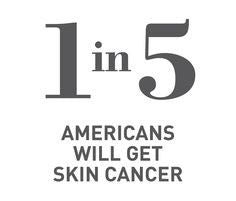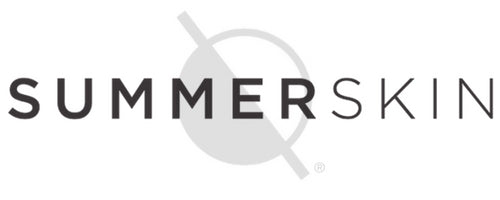
Skin Cancer Facts
GENERAL
- In the U.S., skin cancer is the most common form of cancer. Estimates from 2006 showed over 2 million people were treated for non-melanoma skin cancer, resulting in over 3.5 million diagnosed skin cancer annually.(1)
- In the U.S., one in every five people will develop skin cancer in their lifetime.(2)
- Actinic keratosis (AK) is the most common precancerous lesion – 58 million Americans are estimated to experience AK each year.(3)
- Basal cell carcinoma (BCC) and Squamous cell carcinoma (SCC) are the most common forms of skin cancer. A recent study has an annual estimate of 1.3 million Americans being diagnosed with non-melanoma skin cancer.(4)
- Melanoma – an estimated 123,590 Americans were diagnosed with melanoma in 2011 – 70,230 invasive diagnoses, and 53,360 in situ (noninvasive), resulting in 8,790 deaths.(5)
- Ultraviolet (UV) radiation exposure is the main environmental and artificial cause of skin cancer. Sun exposure (environmental) and indoor tanning beds (artificial) provide the main sources of indirect and intentional UV radiation.(6)
- UV and sun exposure are associated with up to 90% of the signs of premature aging of the skin.(7)
- In 2004, the total direct cost associated with the treatment for nonmelanoma skin cancer was $1.5 billion.(8)
MELANOMA
- Melanoma is the fifth and seventh most common cancer for males and females respectively.(5)
- Under the age of 40, the two types of cancer that women have the highest probability of developing are breast cancer and melanoma.(5)
- Approximately 75% of skin cancer deaths can be attributed to melanoma. It is estimated that one person dies of melanoma every hour.(5)
- Melanoma is the second most common form of cancer for adolescents and young adults ages 15-29, with the highest rates between the ages of 25-29.(9)
- The incidence of melanoma is increasing faster for females than males in the 15-29 age group. The most common location of the body being on the torso and/or the lower limbs and hips, which may be associated with the increase of intentional sun exposure and tanning activities.(9)
- When melanoma is diagnosed early (when the lesion is still localized), the 5-year survival rate is 98%. However, if melanoma is not detected until after it has spread to other areas of the body the 5-year survival rate can be as low as 16%.(5)
- Compared to the general population, melanoma survivors are approximately 9 times more likely to develop additional melanomas, and the risk can remain elevated even 20 years after the initial diagnosis.(10)
INDOOR TANNING
- The World Health Organization’s International Agency for Research on Cancer (IARC) has placed indoor tanning beds into the highest cancer risk group, “Group 1: Carcinogenic to humans.” Along with UV radiation, other carcinogens listed in “Group 1” include asbestos, plutonium and tobacco smoke.(11)
- The FDA regulates indoor tanning beds as Medical Devices and requires manufacturers to comply with specific standards including UV radiation levels, labeling, warnings, eye protection, and recommended maximum lengths of exposure.12 However, there is limited accountability or regulation of tanning salons to remain compliant once the tanning bed is in use.(13,14)
- UVB has long been a known carcinogen, which prompted the indoor tanning industry to focus on and market the UVA side of the spectrum. Most of the UV radiation that is emitted from indoor tanning beds is in the form of UVA, with limited amounts of UVB. However, recently there has been an increase in the amount of UVB emitted from tanning beds in an effort to more closely match the sun’s spectrum and speed the time required for tanning.(15)
- Approximately 28 million Americans use indoor tanning beds each year, with more than 2.3 million tanning bed users being teenagers.(16)
- In the U.S., it is estimated that 71% of tanning salon patrons under the age of 30 are female. Overall, 50% of tanning salon patrons are 29 years of age or younger.(17)
- The IARC states that the use of tanning beds prior to the age of 30 increases a person’s risk of developing melanoma by 75%.(11)
- Any amount of UV exposure from tanning beds, has an estimated 2.5 times increased risk of developing squamous cell carcinoma and a 1.5 times increased risk of developing basal cell carcinoma.(18)
- Studies suggest that the tanning process is directly initiated by DNA damage within skin cells, and that the DNA damage can occur even before a sun tan or burn is evident. Thus, there is no “safe” tan.(19)
- The 2011 estimated annual revenue of the indoor tanning industry: $5 billion.(20)
REFERENCES
1. Rogers, HW, Weinstock, MA, Harris, AR, et al. Incidence estimate of nonmelanoma skin cancer in the United States, 2006. Arch Dermatol 2010; 146(3):283-287.
2. Robinson, JK. Sun exposure, sun protection, and vitamin D. JAMA 2005; 294:1541-43.
3. The Lewen Group, Inc. The burden of skin diseases 2005. The Society for Investigative Dermatology and The American Academy of Dermatology Association. 2005.
4. Stern, RS. Prevalence of a history of skin cancer in 2007: results of an incidence-based model. Arch Dermatol 2010; 146(3):279-282.
5. American Cancer Society. Cancer Facts & Figures 2011. Atlanta: American Cancer Society; 2011.
6. IARC Working Group. The association of use of sunbeds with cutaneous malignant melanoma and other skin cancers: A systematic review. Int. J. Cancer 2006; 120:1116-1122.
7. U.S. Environmental Protection Agency. Health effects of overexposure to the sun. Link. Updated July 1, 2010. Accessed May, 2012.
8. Bickers DR, Lim HW, Margolis D et al. The burden of skin diseases: 2004 a joint project of the American Academy of Dermatology Association and the Society for Investigative Dermatology. J Amer Acad Dermatol 2006; 55(3):490-500.
9. Altekruse SF, Kosary CL, Krapcho M, et al. SEER Cancer Statistics Review, 1975-2007, National Cancer Institute. Link. Accessed May, 2012.
10. Bradford PT, Freedman DM, Goldstein AM, Tucker MA. Increased risk of secondary primary cancers after a diagnosis of melanoma. Arch Dermatol 2010; 146(3):265-272.
11. IARC, 2010, Agents Classified by the IARC Monographs’, Volumes 1-100; Link. Accessed May, 2012.
12. Federal Drug Administration (FDA) Code of Federal Regulations – Title 21, Vol. 8, Sec.1040.20 Sunlamp products and ultraviolet lamps intended for us in sunlamp products. Link. Accessed May, 2012.
13. U.S. House Investigative Report. False and misleading health information provided to teens by the indoor tanning industry, Feb. 2012. Link. Accessed May, 2012.
14. Brouse CH, Basch CE, Neugut AI. Warning signs observed in tanning salons in New York City: implications for skin cancer prevention. Prev Chronic Dis 2011;8(4):A88. Link. Accessed May, 2012.
15. World Health Organization (WHO). Ultraviolet radiation and the INTERSUN programme. Link. Accessed May, 2012.
16. Dellavalle RP, Parker ER, et. al. Youth access laws: in the dark at the tanning parlor? Arch Dermatol 2003; 139:443-448.
17. Swerdlow AJ, Weinstock MA. Do tanning lamps cause melanoma? An epidemiologic assessment. J Amer Acad Dermatol 1998; 38:89-98.
18. Karagas MR, Stannard VA, Mott LA, Slattery MJ, Spencer SK, and Weinstock MA. Use of tanning devices and risk of basal cell and squamous cell skin cancers. J Natl Cancer Inst 2002; 94:224-226.
19. Lin. J. et.al, Melanocyte biology and skin pigmentation. Nature 2007; 445:843-850
20. IBISWorld Industry Report. Tanning Salons in the US: Market Research Report. NAICS 81219c. Link. Accessed May 2012.
